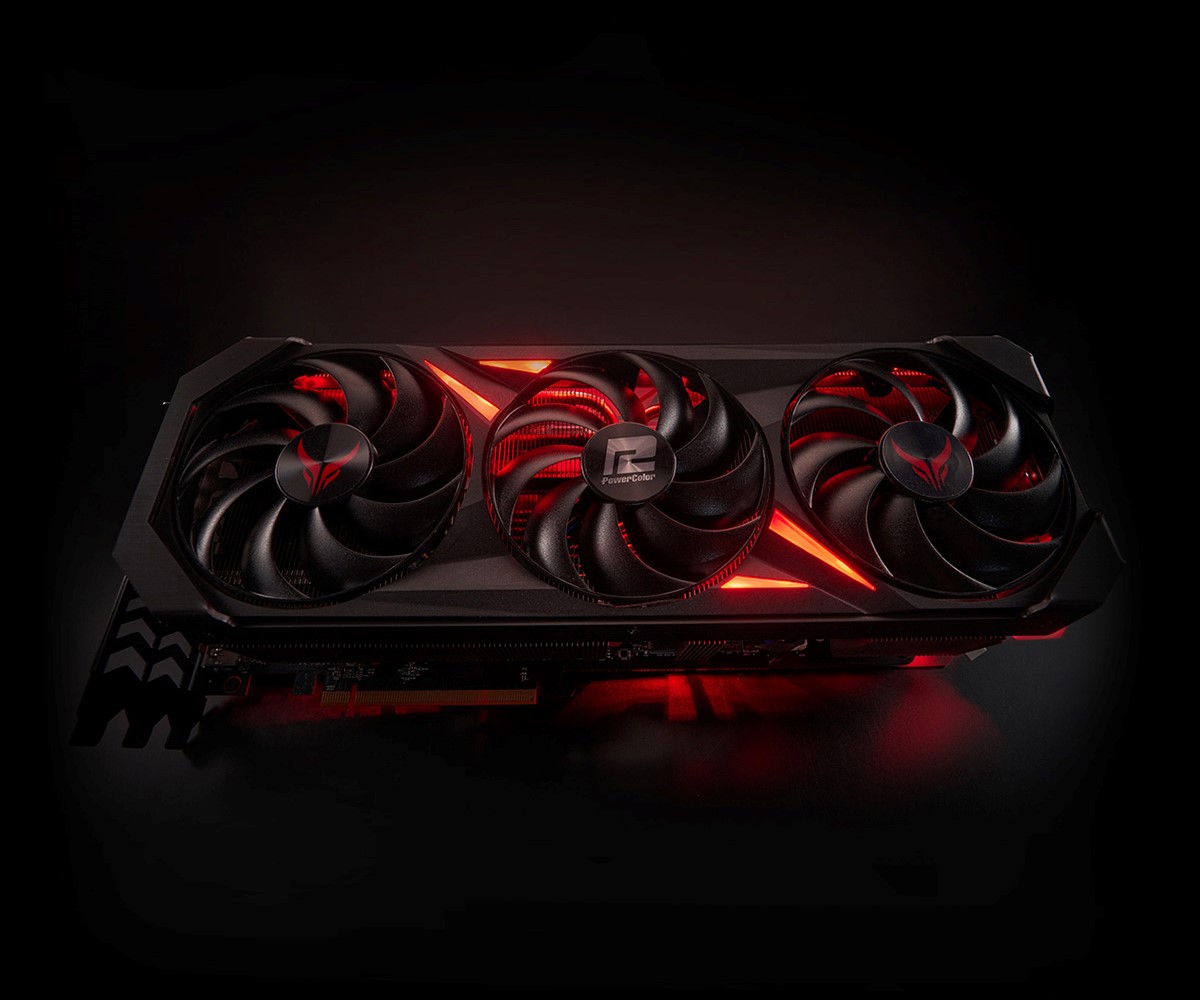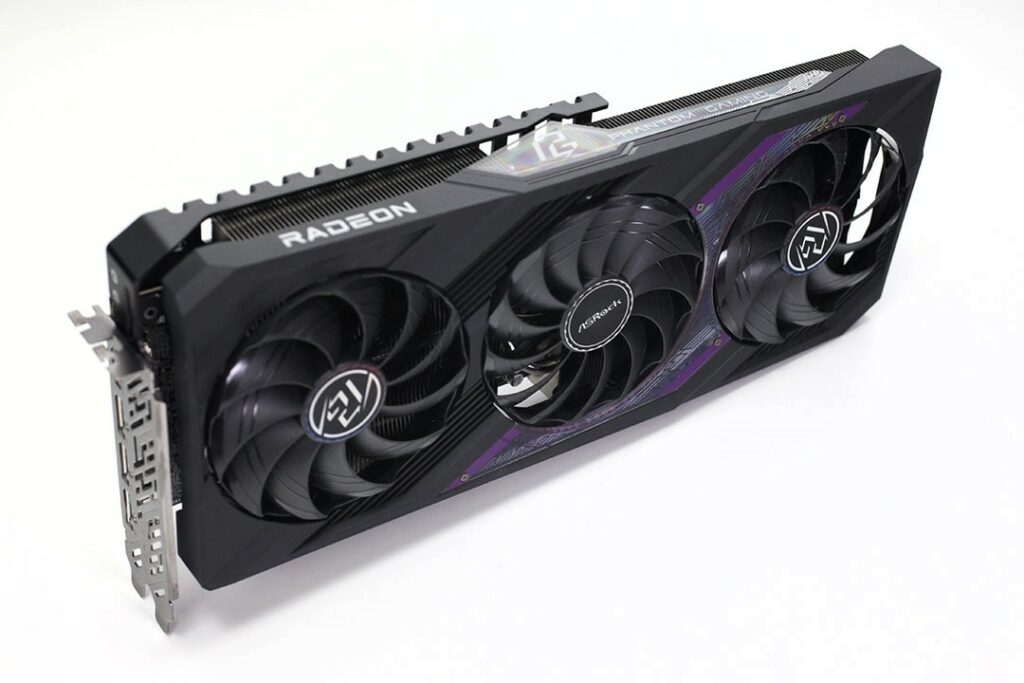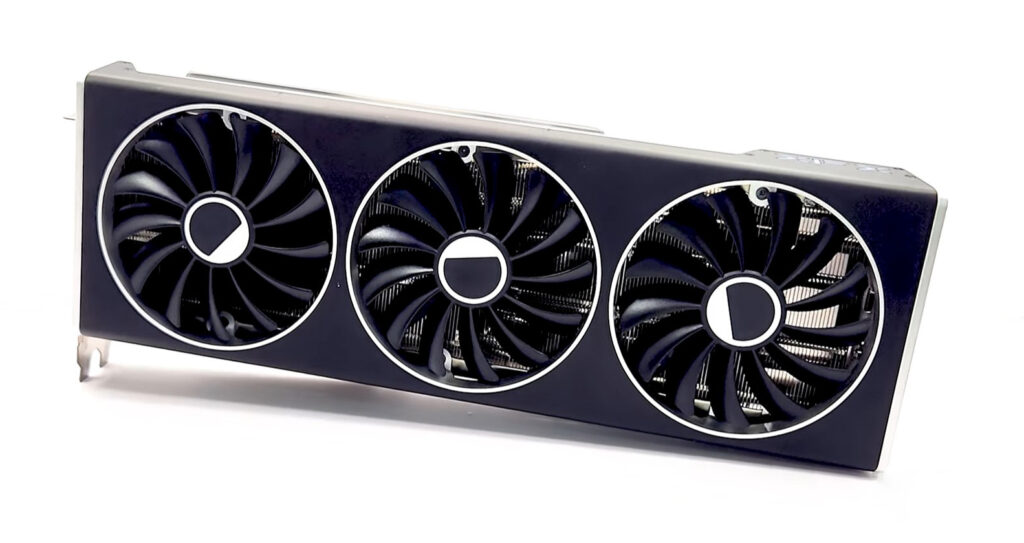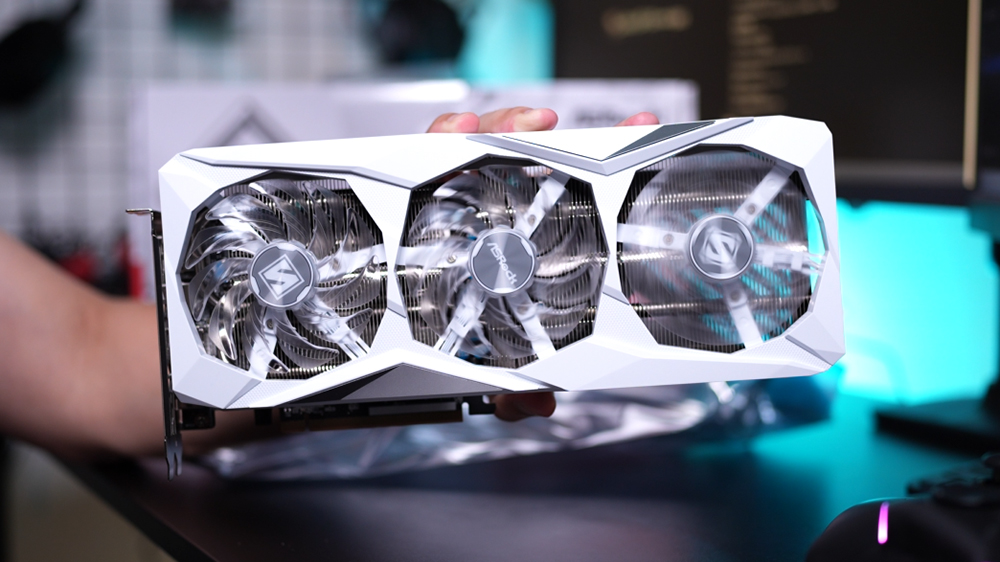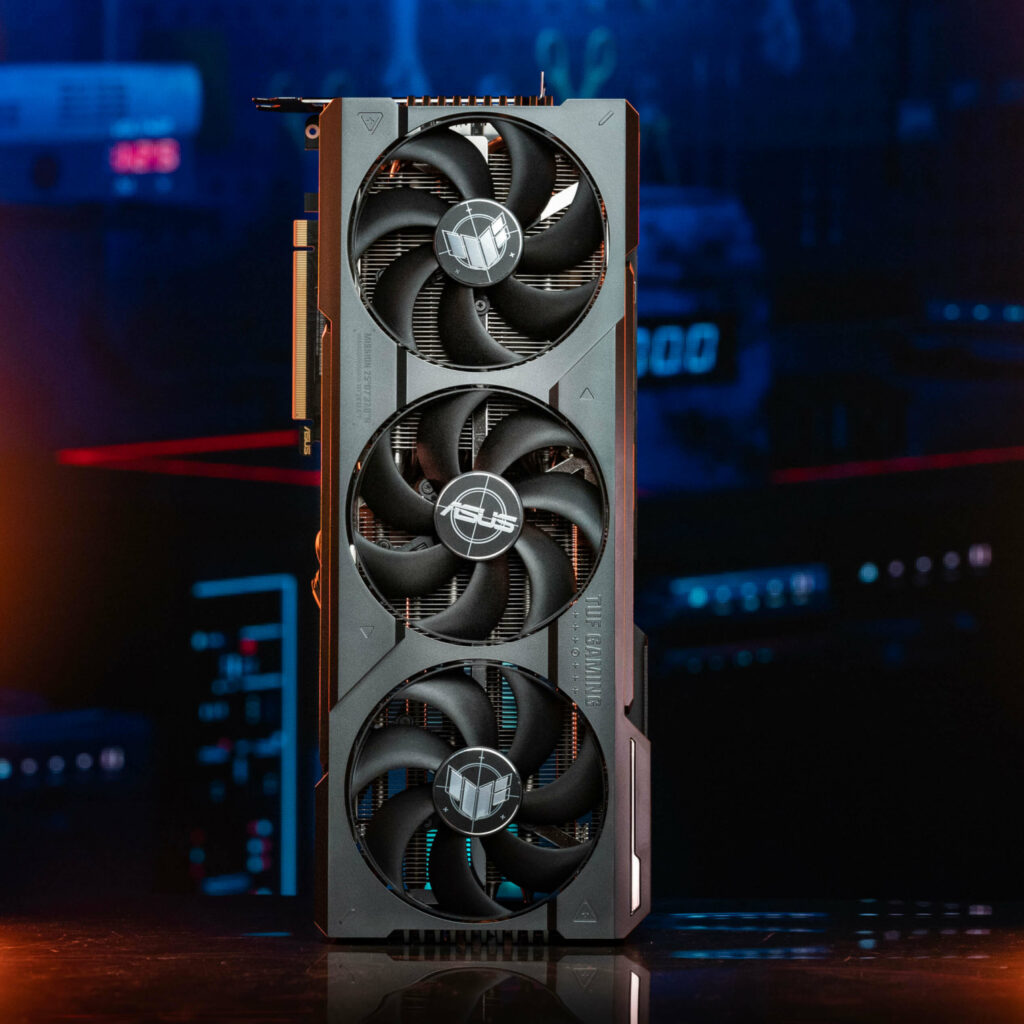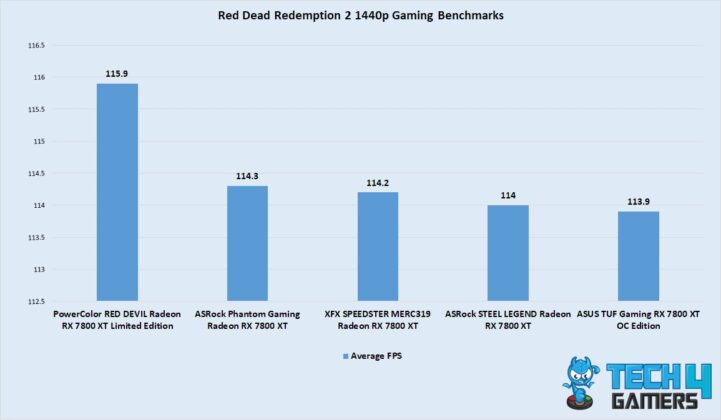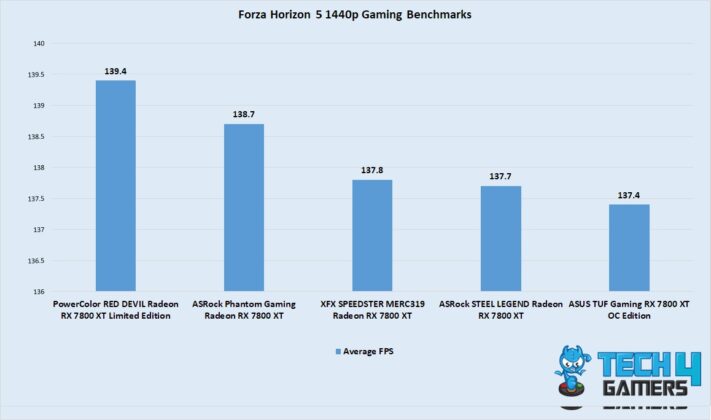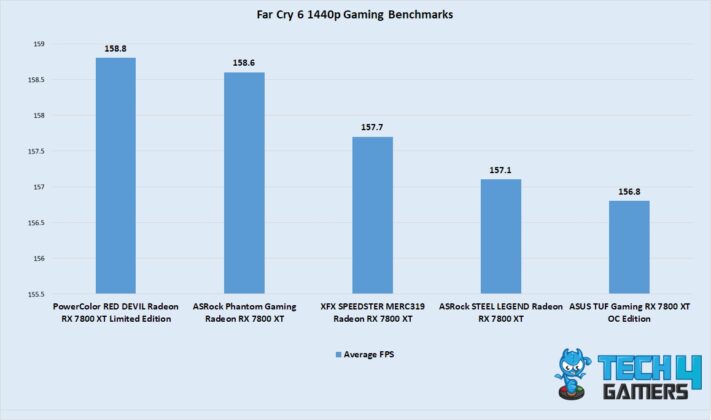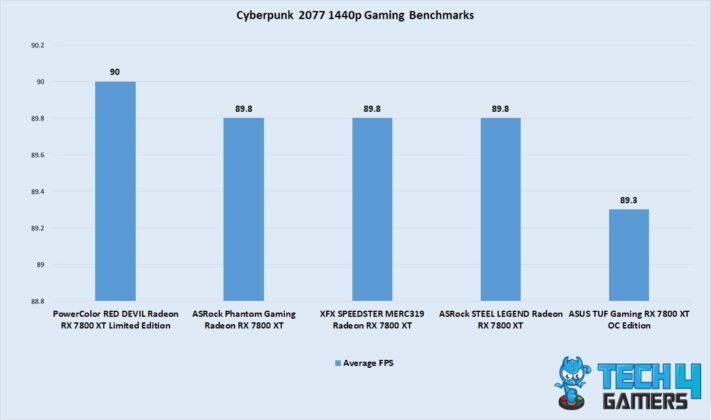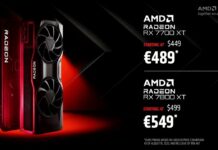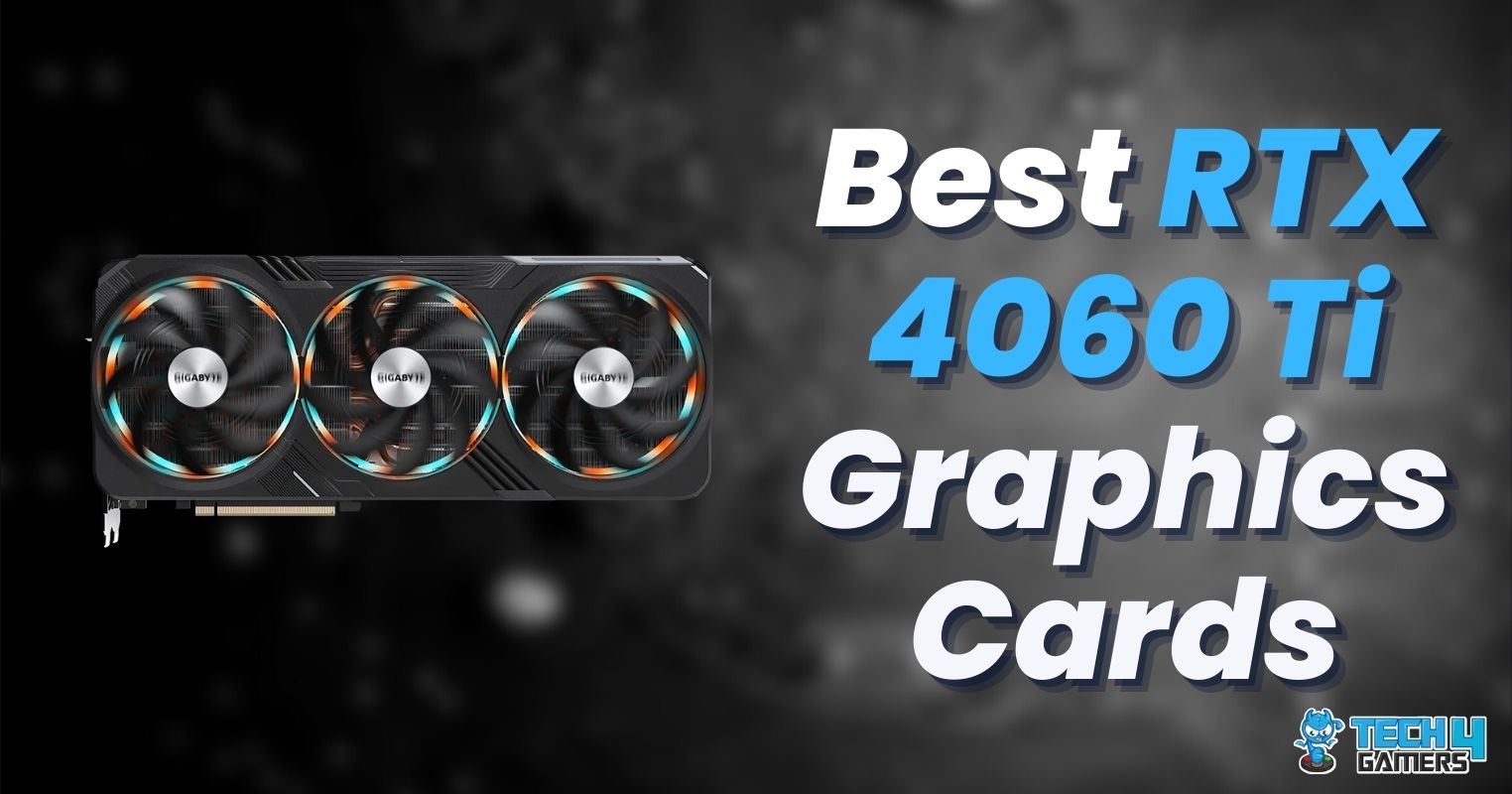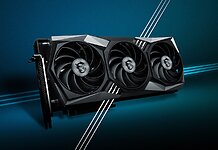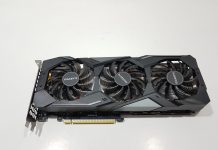The Radeon RX 7800 XT represents AMD’s attempt to capture the 1440p market, as it is one of the fastest and most powerful graphics cards on the shelves. Equipped with fantastic modern features like AMD FSR and delivering exceptional gaming performance in my testing, the Radeon RX 7800 XT is primed to be one of the best graphics cards for 1440p. Therefore, we have compiled a selection of the very best variants of the RX 7800 XT based on our hands-on experience and comprehensive testing.
Our Top Picks
Here’s a quick look at the best RX 7800 XT graphics cards, alongside a brief comparison of their specs:










Last Updated:
- August 9, 2024: We have changed the formatting for improved readability.
Just unboxed the Radeon RX 7800 XT? Our guide is a must-read:
Best RX 7800 XT Graphics Cards
Here is my selection of the best RX 7800 XT graphics cards based on thorough testing:
- Best Overall: PowerColor Red Devil Radeon RX 7800 XT LE
- Best Overclocked: ASRock Phantom Gaming Radeon RX 7800 XT
- Best High-End: XFX SPEEDSTER MERC319 Radeon RX 7800 XT
- Best White: ASRock Steel Legend Radeon RX 7800 XT
- Best Value: ASUS TUF Gaming RX 7800 XT OC Edition
PowerColor Red Devil Radeon RX 7800 XT LE
Best Overall RX 7800 XT Graphics Card
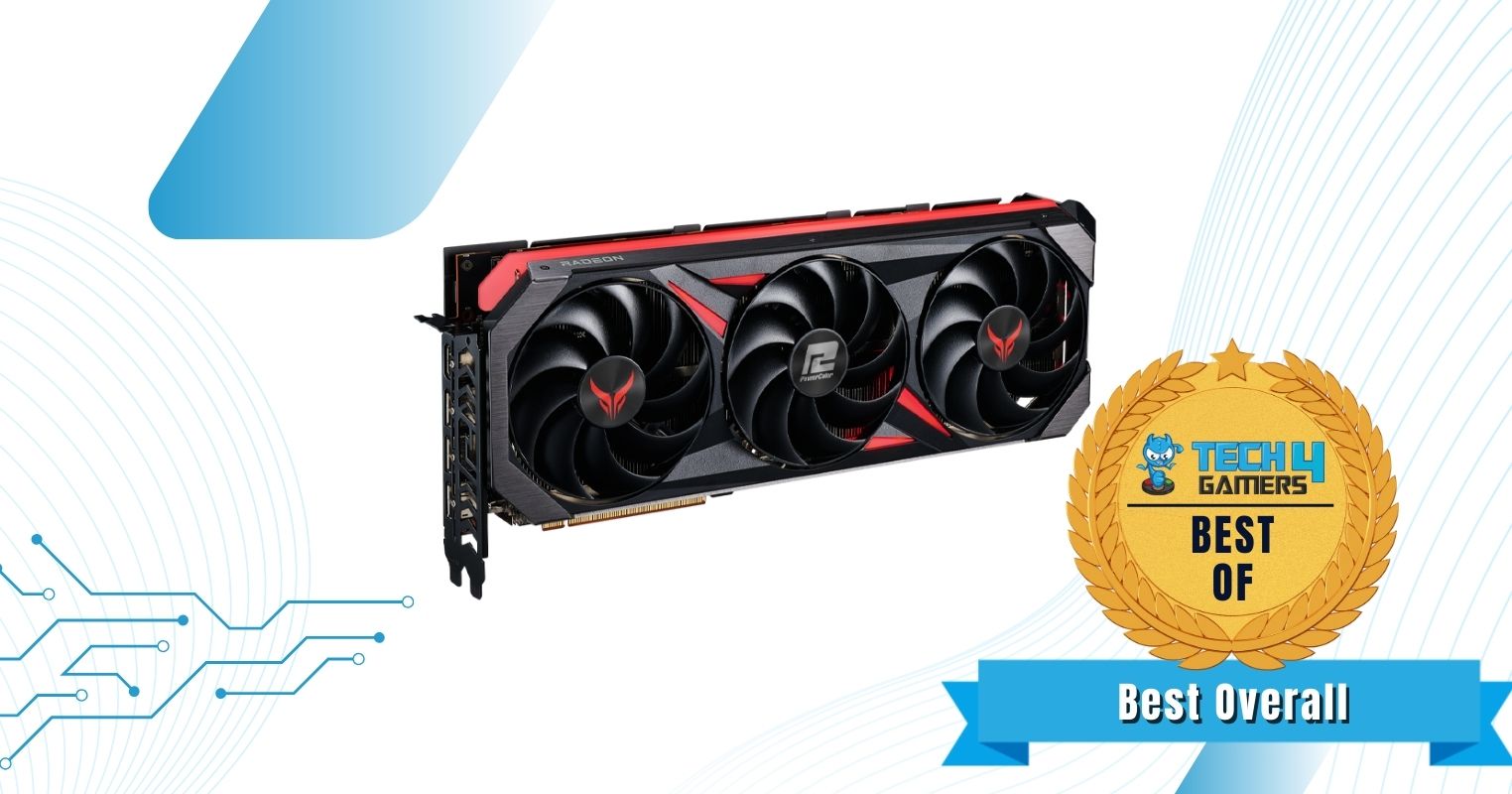
Boost Clock: 2565 MHz | Dimensions: 345 x 151 x 52 mm | Display Outputs: 1x HDMI 2.1, 3x DisplayPort 2.1 | Recommended PSU: 800W | Power Connectors: 2x 8-pin PCIe | RGB Lighting: Yes
Pros
- Superb thermal performance
- Impressive acoustics
- Attractive design
- High factory overclock
Cons
- Quite expensive
- Relatively large
One glance at the Red Devil RX 7800 XT will immediately set it apart from the crowd. PowerColor has implemented an aggressive, angular, and gamer-centric design that is synonymous with the Red Devil brand. A large RGB strip wraps around the length of the card and can be customized using the PowerColor DevilZone software. At its heart is a large heatsink with vertical fins and a copper base plate that makes direct contact with the GPU, along with 7x 6φ nickel-plated copper heat pipes for maximum heat dissipation. A metal-reinforced backplate is installed to not only improve rigidity but also to increase thermal dissipation through strategically placed cutouts.
The Red Devil RX 7800 XT features an incredibly well-designed power delivery system with a 10+2+1 phase layout featuring DrMOS components. On top of that, a 14-layer high TG PCB – including a 2 oz power layer, is featured in the Red Devil to minimize signal degradation and to improve reliability.
The PowerColor Red Devil RX 7800 XT checks all the boxes for gamers and enthusiasts who want a well-rounded variant of the RX 7800 XT. Its overclocking ability is excellent, and its powerful cooling solution is able to keep up with even the most demanding scenarios. Keep an eye out for this variant for your next build.
– Dr. Usman Saleem
What Makes It The Best Overall RX 7800 XT Graphics Card?
The PowerColor Red Devil RX 7800 XT checks all the boxes that you would want from a high-end variant as it features an extraordinary cooling solution, robust power delivery, as well as a unique design, making it the best overall RX 7800 XT graphics card.
| Performance: 10/10 | Value: 8/10 |
| Features: 9/10 | Design: 9/10 |
ASRock Phantom Gaming Radeon RX 7800 XT
Best Overclocked RX 7800 XT Graphics Card
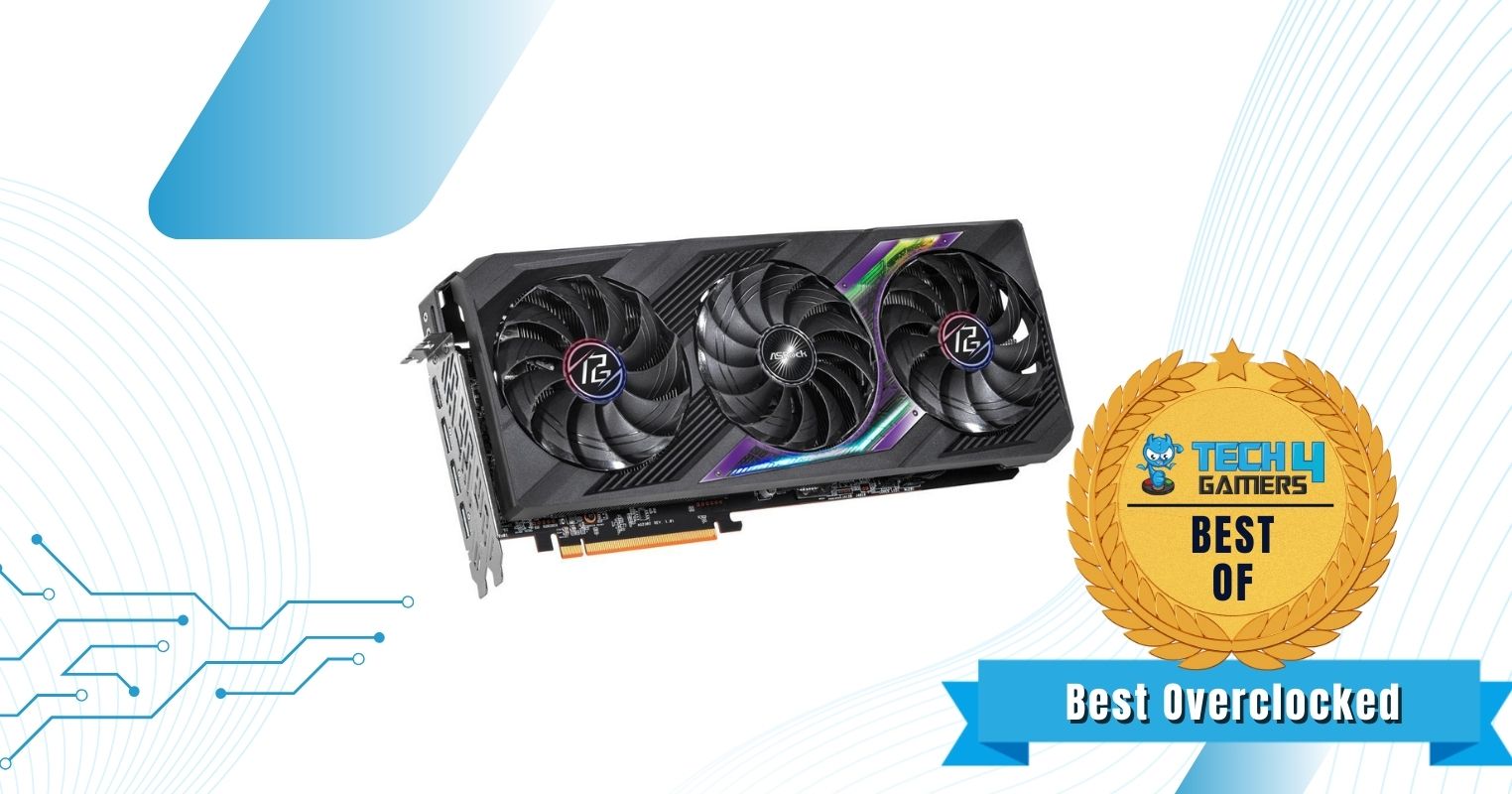
Boost Clock: 2565 MHz | Dimensions: 328 x 140 x 53 mm | Display Outputs: 1x HDMI 2.1, 3x DisplayPort 2.1 | Recommended PSU: 800W | Power Connectors: 2x 8-pin PCIe | RGB Lighting: Yes
Pros
- Substantial factory overclock
- Well-built cooling solution
- Superb RGB implementation
- Robust power delivery
Cons
- High power requirements
- Polarizing design
ASRock’s take on the Radeon RX 7800 XT is quite colorful and brave, with a clear focus on RGB illumination and an aggressive design language. The faceplate of the ASRock Phantom Gaming RX 7800 XT is unlike any other variant on the market, with a large RGB area running diagonally across the middle of the card. Featuring a hefty heatsink array covering 3 slots, and five nickel-plated copper heat pipes at its core, the Phantom Gaming RX 7800 XT can definitely be classed as a premium-tier variant. The thermal solution also uses a large copper baseplate that makes direct contact with the GPU, as well as VRMs and memory chips through thermal pads.
The improved boost clock of 2565 MHz provides a substantial performance benefit and a decent floor for manual overclocking. Speaking of GPU overclocking, the Phantom Gaming RX 7800 XT features an 11-phase VRM design with 70A power stages, making it a very robust and reliable power delivery system.
What Makes It The Best Overclocked RX 7800 XT Graphics Card?
Offering a substantial factory overclock up to 2565 MHz straight out of the box, coupled with a robust 11-phase VRM design for manual overclocking, the ASRock Phantom Gaming RX 7800 XT is the best overclocked RX 7800 XT graphics card.
| Performance: 10/10 | Value: 8/10 |
| Features: 9/10 | Design: 8/10 |
XFX SPEEDSTER MERC319 Radeon RX 7800 XT BLACK
Best High-End RX 7800 XT Graphics Card

Boost Clock: 2565 MHz | Dimensions: 326 x 126 x 58 mm | Display Outputs: 1x HDMI 2.1, 3x DisplayPort 2.1 | Recommended PSU: 700W | Power Connectors: 2x 8-pin PCIe | RGB Lighting: No
Pros
- Exceptional cooling solution
- Impressive noise profile
- High factory overclock
- Reasonable power requirements
Cons
- Relatively expensive
- No RGB lighting
The MERC319 RX 7800 XT follows the modern trend as it sports a rather stealthy all-black design with subtle silver accents. In keeping with the new design approach, XFX has not included RGB lighting in the SPEEDSTER MERC319 RX 7800 XT, although the silver backplate gives the card a unique personality. Under the gigantic 3-slot shroud, XFX has implemented its acclaimed Ghost Thermal cooling solution. At the heart of the massive heatsink array is a vapor chamber cooling solution that whisks heat away from the GPU die, directly into 5 nickel-plated copper heat pipes.
XFX has not made any compromises with the performance and build quality of the Radeon RX 7800 XT, and that is evident from its substantial factory overclock to 2565 MHz. Moreover, the PCB design is exceptional featuring a 14-phase power delivery system with 70A power stages, with 9 of those stages dedicated directly to the GPU core.
What Makes It The Best High-End RX 7800 XT Graphics Card?
With an unparalleled premium cooling solution, impressive acoustics, and an incredible 14-phase VRM design, the XFX SPEEDSTER MERC319 RX 7800 XT is the best high-end RX 7800 XT graphics card.
| Performance: 10/10 | Value: 8/10 |
| Features: 9/10 | Design: 7/10 |
ASRock Steel Legend Radeon RX 7800 XT
Best White RX 7800 XT Graphics Card
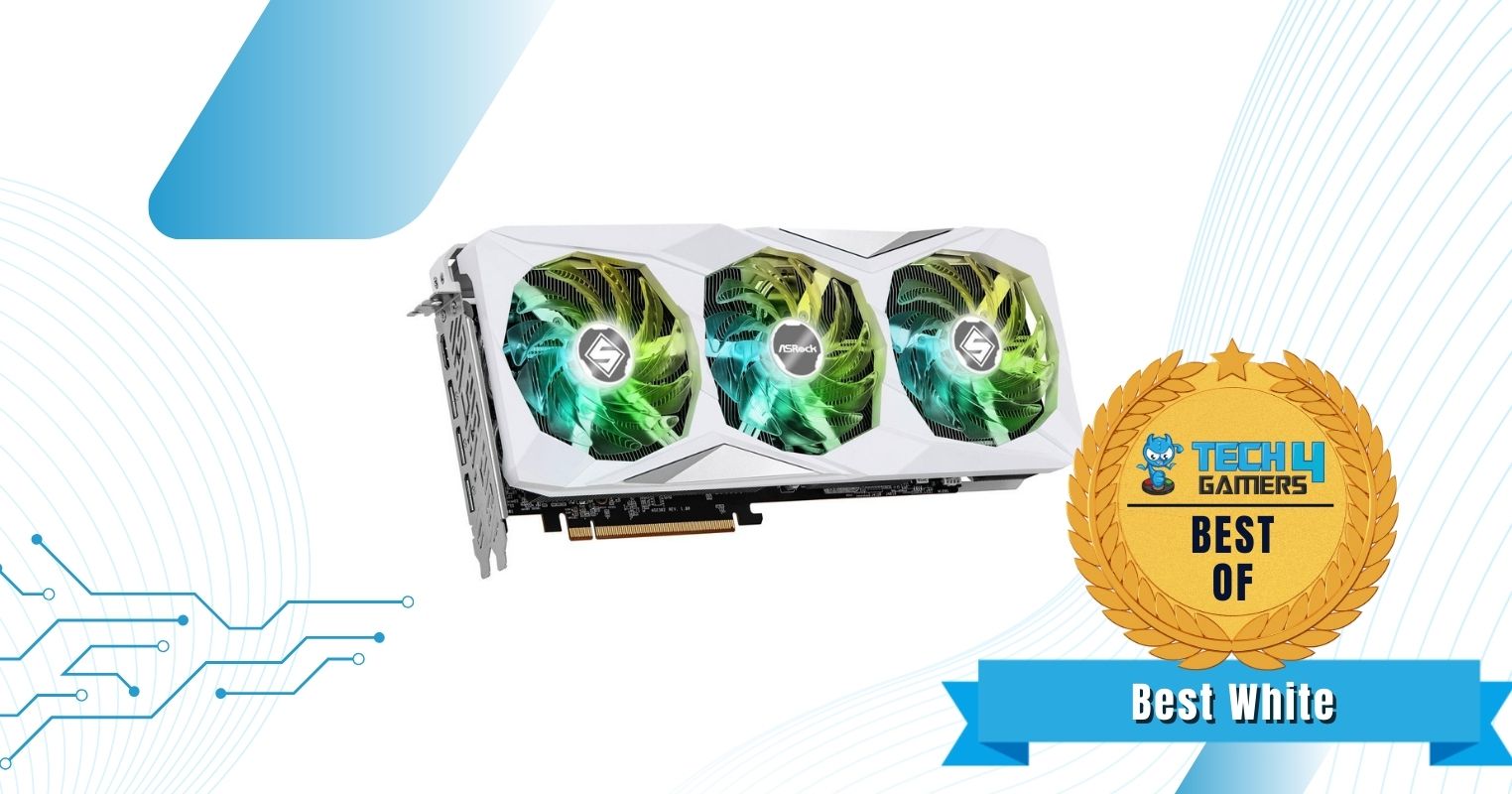
Boost Clock: 2520 MHz | Dimensions: 304 x 131 x 56 mm | Display Outputs: 1x HDMI 2.1, 3x DisplayPort 2.1 | Recommended PSU: 800W | Power Connectors: 2x 8-pin PCIe | RGB Lighting: Yes
Pros
- Unique all-white theme
- Low noise levels
- Superb cooling solution
- Attractive RGB lighting
Cons
- High power requirements
- Slightly lower boost clocks
Catering to the rise in popularity of all-white PC builds, ASRock has delivered the Steel Legend RX 7800 XT graphics card which features a unique white theme with supremely attractive aesthetics. The card looks like a visual masterpiece, thanks to its innovative design language and impressive RGB implementation. It features a gigantic heatsink assembly with unique V-shaped vents that allow for optimal passage of airflow through the fins. The large nickel-plated copper baseplate makes direct contact with the GPU die and associated VRAM components, while the copper heat pipes are inlaid directly into the contact plate to maximize their surface area.
The ASRock Steel Legend RX 7800 XT encourages manual overclocking thanks to its superb PCB design and reliable power delivery system, which features 90A power stages and DrMOS components. The PCB is further reinforced using 2oz Copper layers that help in minimizing signal degradation.
What Makes It The Best White RX 7800 XT Graphics Card?
Boasting a unique all-white exterior along with an excellent cooling solution and impressive RGB lighting implementation in the fans, the ASRock Steel Legend RX 7800 XT is the best white RX 7800 XT graphics card.
| Performance: 9/10 | Value: 8/10 |
| Features: 9/10 | Design: 10/10 |
ASUS TUF Gaming RX 7800 XT OC Edition
Best Value RX 7800 XT Graphics Card
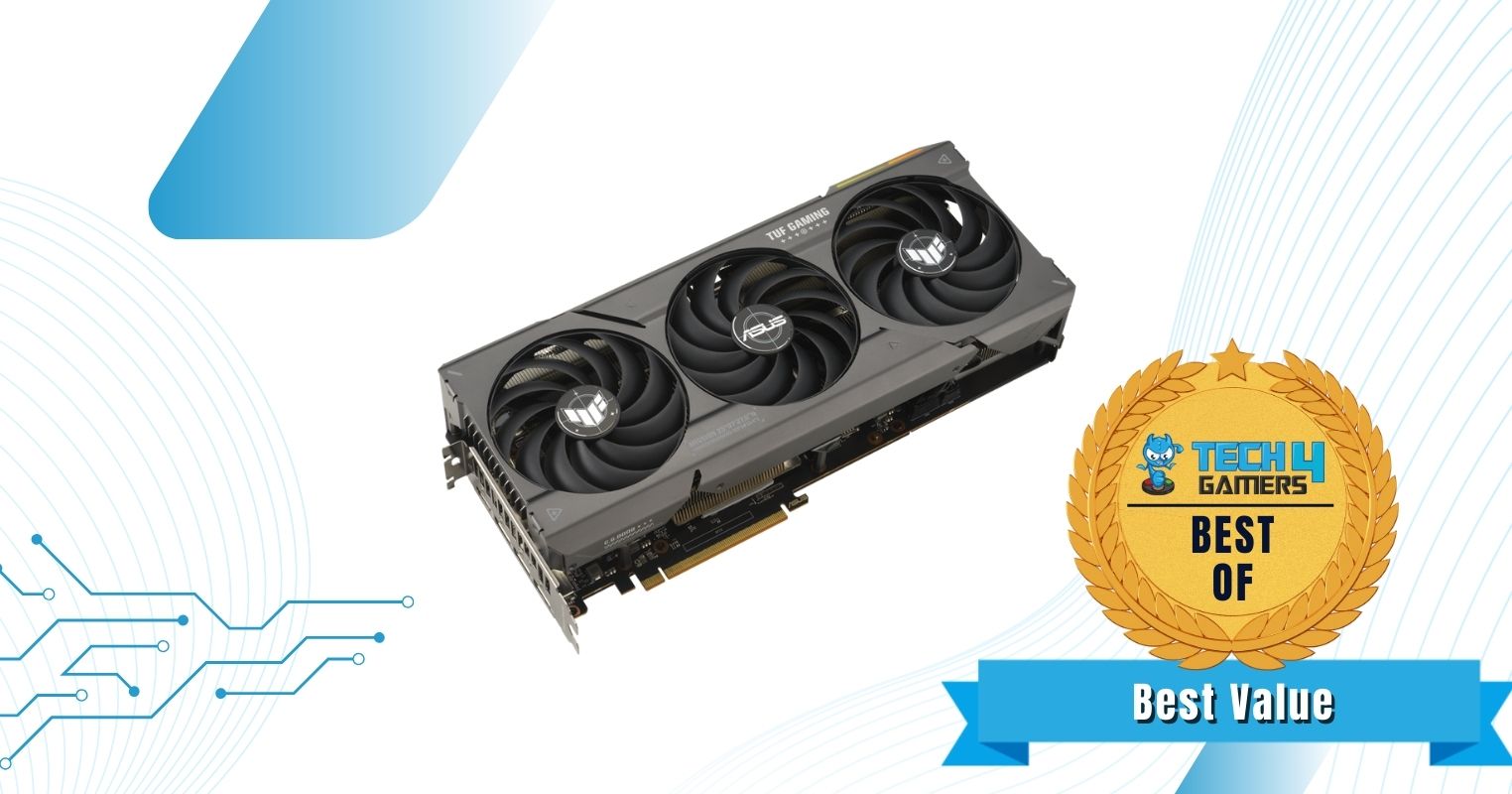
Boost Clock: 2565 MHz | Dimensions: 319.8 x 150.9 x 59.2 mm | Display Outputs: 1x HDMI 2.1, 3x DisplayPort 2.1 | Recommended PSU: 750W | Power Connectors: 2x 8-pin PCIe | RGB Lighting: Yes
Pros
- Affordable variant
- Excellent thermal performance
- High boost clocks
- Reasonable power draw
Cons
- Simple design
- Minimal RGB lighting
The TUF RX 7800 XT keeps it simple and minimalistic with the design elements on the fan shroud, but there is a distinct pattern on the metal backplate that gives it a bit of personality. The RGB lighting is minimal and restricted to the TUF logo on the side of the card. The main copper baseplate provides direct cooling to the GPU die, VRM circuitry, and memory chips as well. Moreover, the cooling solution uses five nickel-plated copper heat pipes that whisk the heat away from the heat-generating components and spread it throughout the gigantic 3-slot heatsink for maximum dissipation.
The ASUS TUF RX 7800 XT comes factory overclocked to 2565 MHz, which is a superb boost for a value-oriented variant. Moreover, the card is equipped with a reliable 10+2 phase power delivery system with 70A power stages, allowing it to be a prime candidate for manual overclocking as well.
What Makes It The Best Value RX 7800 XT Graphics Card?
At a nominal price premium over MSRP, the ASUS TUF Gaming RX 7800 XT offers extraordinary cooling performance, quiet fans, and a high factory overclock, making it the best value RX 7800 XT graphics card.
| Performance: 9/10 | Value: 10/10 |
| Features: 9/10 | Design: 7/10 |
Gaming Benchmarks Of These RX 7800 XT Graphics Cards
At Tech4Gamers, we take pride in the authenticity and objectivity of our content, which is why our specialized team of hardware experts runs a gauntlet of tests on each graphics card before our recommendation. Here are the gaming benchmarks of the best RX 7800 XT graphics cards.
Important GPU Key Terms
When shopping for a graphics card, it is wise to keep the following key terms in mind.
- Stream Processors: Stream processors, found in AMD GPUs, are small processing units that handle individual data elements concurrently. They are responsible for executing parallel tasks in graphics rendering and other computing workloads.
- VRAM (Video Random Access Memory): High-speed memory on a GPU used to store textures, frame buffers, and other data required for rendering graphics, separate from a computer’s main system RAM.
- TDP (Thermal Design Power): The maximum amount of heat a GPU is designed to generate under a heavy workload, often used to determine the optimal cooling solution for a graphics card.
- Overclocking: The process of increasing a GPU’s clock speeds and voltages beyond their stock settings to achieve higher performance, often at the risk of increased heat, power draw, and potential stability issues.
- Rasterization: The process in GPU rendering where 3D objects are converted into 2D images composed of pixels, a fundamental step in generating graphics on a screen.
How We Picked The Best RX 7800 XT Graphics Cards
Here are some of the key factors that you should evaluate when shopping for the ideal graphics card for your PC build.
- Cooling Performance: When shopping for a graphics card, evaluating its cooling performance is crucial for ensuring optimal operation and longevity. Examine the quality and size of the heatsink, as a larger heatsink can prevent thermal throttling more effectively. Consider the number of heat pipes; more heat pipes generally indicate better heat transfer.
- VRM Design: The VRM design is a critical component of the graphics card that must be considered. Look for a card with a high number of VRM phases for stable power distribution, which can improve overclocking potential. Checking VRM benchmarks is a great way to get an idea about the quality of a VRM.
- Power Limit: An advantage of aftermarket variants is that they are free to customize the power requirements to suit their performance targets. Look for graphics card variants with an increased power limit, as that not only translates to better performance at stock settings but also allows for higher overclocking headroom and added stability in the long run.
- Aesthetics: Aesthetics and design should not be overlooked when purchasing a graphics card. The visual appeal of a card can enhance the overall look of your PC build, and many models come with customizable RGB lighting for a personalized touch. Certain variants come with unique design features, such as an all-white exterior or customizable backplates.
- Value For Money: Ultimately, the purchase decision rests on the price and overall value of a graphics card. Consider your budget and the card’s performance to find the best balance between cost and capabilities. Additionally, take into account factors like initial price, the card’s performance, and long-term reliability to gauge the card’s overall value proposition.
What’s your take on this?
FAQs
According to my test results, the Radeon RX 7800 XT is equivalent to the GeForce RTX 4070 or the RTX 3080 Ti in gaming performance. It also falls right in between the Radeon RX 6800 XT and RX 6900 XT on the AMD side.
The AMD Radeon RX 7800 XT is slightly better than the RTX 4070 in rasterization performance, but the RTX 4070 holds an edge in Ray Tracing performance. The two graphics cards often exchange blows at 1440p and 4K.
Yes, the AMD Radeon RX 7800 XT is a fantastic graphics card for 1440p gaming. You can experience modern AAA titles at high or ultra settings at 1440p, getting above 60 FPS in most games at all times. You can even experience 144 Hz gaming at 1440p, depending on the title.
According to AMD, 750W should be enough for the Radeon RX 7800 XT since AMD recommends a 700W power supply for this graphics card. However, some aftermarket variants recommend an 800W power supply, so you should check the requirements of the individual variant.
Yes, the AMD Radeon RX 7800 XT can definitely run games and media at 4K resolution. For gaming, the card delivers admirable performance at 4K in modern games, but it is better suited for 1440p resolution.
Our scope of testing includes more AMD graphics cards:
- Best RX 7900 XT Graphics Cards
- Best RX 7900 XTX Graphics Cards
- Best RX 7700 XT Graphics Cards
- Best RX 7600 Graphics Cards
Recent Updates
- November 23, 2023: Few text changes to improve readability. No products were changed.
Thank you! Please share your positive feedback. 🔋
How could we improve this post? Please Help us. 😔
[Reviews Specialist]
Usman Saleem brings 8+ years of comprehensive PC hardware expertise to the table. His journey in the tech world has involved in-depth tech analysis and insightful PC hardware reviews, perfecting over 6+ years of dedicated work. Usman’s commitment to staying authentic and relevant in the field is underscored by many professional certifications, including a recent one in Google IT Support Specialization.
8+ years of specialized PC hardware coverage
6+ years of in-depth PC hardware analysis and reviews
Lead PC hardware expert across multiple tech journalism platforms
Certified in Google IT Support Specialization
Get In Touch: usman@tech4gamers.com


 Threads
Threads